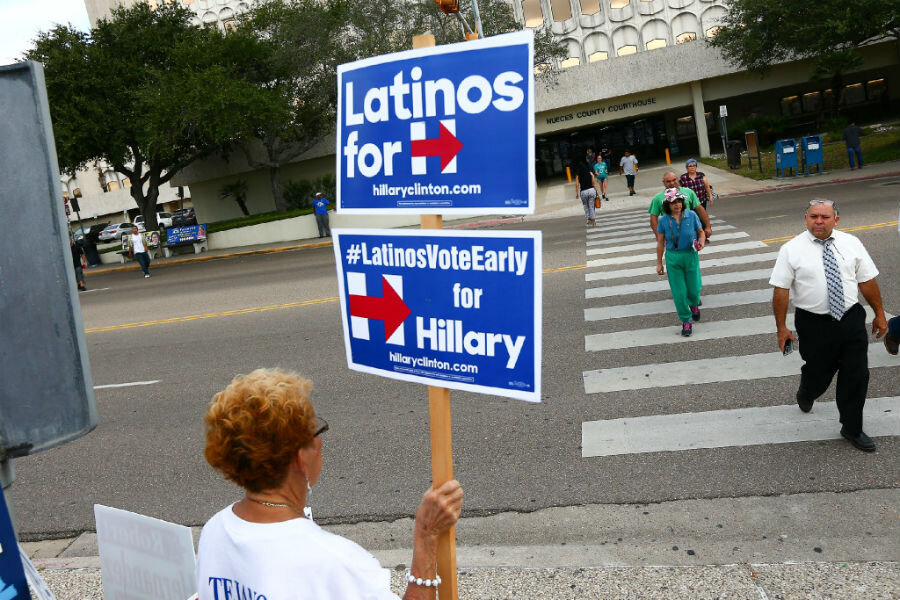Could Texas go blue?
Ever since the terms "red state" and "blue state" became popular, Texas has been the go-to example of the former.
The Lone Star State has not voted for a democratic president since Jimmy Carter in 1976. That's 40 years of reliably voting for Republican presidential candidates; many democratic candidates rarely even bother with extensive campaigning in the state, instead concentrating their resources on such swing states as Ohio and Florida.
But recent polls show that Republican presidential nominee Donald Trump's lead over Democratic presidential nominee Hillary Clinton is getting thin in the former conservative stronghold. As Mr. Trump's unusual campaign draws to a close before November, many wonder whether Texas will actually vote for Mrs. Clinton, going blue for the first time in recent memory. If it does, it may mark a significant shift in political thought, reflecting major changes in the Republican Party in Texas and across the United States.
According to a recent poll conducted by the University of Houston, Trump is still leading in the state, as expected from a Republican presidential candidate. What is less expected is that the Republican is leading by only 3 points at 41 percent support, with 38 percent for Clinton. For comparison, during the 2012 election, Mitt Romney won Texas with 57 percent of the vote, 16 points ahead of Obama's 41 percent.
"Texas has had for a long time a very conservative political culture, based on tradition and reinforced by the movement in the past 20 years of many folks to Texas to take advantage of the [fiscally conservative] business climate," John Johannes, political science professor at Villanova University in Pennsylvania, tells The Christian Science Monitor. "Even if they came as liberals and moderates, there was a conservative socialization process at work."
That majority has driven most of the state's political life since it joined the country in 1845, almost 10 years before the Republican Party was first established. And Texas has been reliably Republican ever since politicians began to cater to white, conservative voters in the South during the civil rights movement in the 1960s.
"This reflects the long-term shift in the parties that began in the middle of the 20th century," Matt Levendusky, associate professor at the department of political science at the University of Pennsylvania, tells the Monitor in an email. "The South was solidly Democratic after the Civil War for approximately 100 years, but then as the parties realigned on race, social issues, and so forth, the country underwent a partisan transformation. The South went from solidly Democratic to solidly Republican."
But times are changing in the Lone Star State. Major Texas newspapers such as the Houston Chronicle and The Dallas Morning News endorsed Clinton, breaking with a long tradition of supporting Republican presidential candidates. Many major Republican politicians refuse to fully support Trump. But at the core of Texas's change may be a more fundamental change, as the state's white, conservative base begins to be replaced by younger people and minorities that have the potential to radically shift the political outlook of the state.
According to CNN, Latinos now make up a whopping 38.8 percent of the Texas population, which is the same percentage as Latinos in California. California, of course, is as staunchly blue as Texas usually is red. Trump's racially charged anti-immigration rhetoric may be causing even conservative Hispanics to ditch the Republican candidate.
Professor Johannes says that as "political awareness and voting" grows among the Latino population, more liberal policies and Democratic candidates will find support in states like Texas. He also points out that analysts have predicted this political shift for years, brought on by a changing demographic in the state. But this degree of support of support for a Democratic candidate over a Republican is happening much sooner than expected.
"A more moderate Republican candidate would [still] appeal to some of these voters; but Trump cannot," Johannes says.
One reason this demographic shift has not created a substantial political change until now is that Texas Latinos tend to vote more conservatively than similar populations in states such as California, since Texan Latinos are more likely to be natural-born citizens rather than being immigrants themselves.
"We know from survey research now over a few decades that the farther you get from the immigrant experience, the more your views shift in a more conservative direction," James Henson, director of the Texas Politics Project at the University of Texas at Austin, told CNN.
If this is the case, Trump's shrinking lead may be less a rebellion against conservatism and more a rebellion against Trump himself, reflected in a tightening race in other historically red states like Arizona and Utah.
"Whether these shifts endure beyond the current election is hard to know; the answer likely depends on what happens after the election and whether those groups continue to lean more Democratic than they have in the past," Joshua Clinton, co-director of the Center for the Study of Democratic Institutions at Vanderbilt University in Nashville, Tenn., tells the Monitor. "After 2012, for example, the Republican Party consciously tried to broaden its appeal, but those efforts were arguably set back as a consequence of the events that have occurred in the 2016 primary and general election."
If Trump loses in November, the GOP may again try to rebrand itself as a more diverse, accepting party than the one espoused by the current presidential candidate.
"Should Texas go blue this year, it would signal no sea-change in the state's politics," says Arnold Shober, an associate professor of government at Lawrence University in Appleton, Wis. "But it would speak volumes about the top of the ticket."







